Imagine stepping into a world of tranquility and beauty, where every element is carefully designed to create harmony and peace. This is the essence of Japanese gardens, a timeless art form that has captured hearts worldwide. From the serene simplicity of Zen gardens to the vibrant symbolism of Shinto gardens, the history of Japanese gardens is a fascinating journey that reflects the deep connection between nature and spirituality in the Japanese culture. Join us as we explore the origins, styles, and philosophy behind these enchanting green spaces, and discover the hidden meanings behind every stone, plant, and carefully raked gravel. Let the mesmerizing history of Japanese gardens transport you to a place of serenity and contemplation.
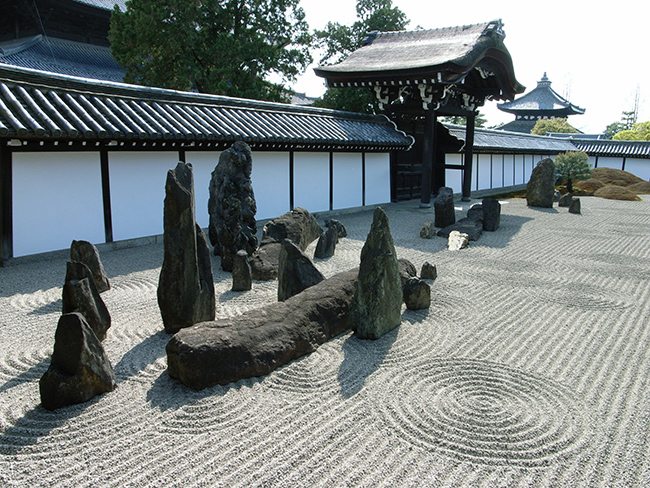
This image is property of www.uniquejapantours.com.
1. Introduction
Welcome to the fascinating world of Japanese gardens! In this article, we will take a journey through the rich history and varied styles of these enchanting landscapes. Japanese gardens have a long and storied past, shaped by a combination of cultural, artistic, and spiritual influences. From the serene Zen gardens to the impeccably designed tea gardens, each style has its own unique characteristics and symbolism. So, grab a cup of tea, sit back, and let’s delve into the captivating world of Japanese gardens.
2. Early Influences
2.1. Origin of Japanese Gardens
Japanese gardens trace their roots back to China, where the art of garden design flourished during the Tang Dynasty. It was during the Heian Period in Japan (794-1185) that the first Japanese gardens started to take shape. Initially, these gardens were influenced by the Chinese style, but they soon developed their own distinct character.
2.2. Influence of Chinese Gardens
Chinese gardens played a crucial role in shaping the early Japanese garden designs. Chinese landscape painting and philosophy, particularly the concept of harmony between man and nature, greatly influenced the development of Japanese gardens. The integration of natural elements, such as rocks, water, and plants, and the careful consideration of each element’s placement became central to Japanese garden aesthetics.
2.3. Introduction of Buddhism
The introduction of Buddhism to Japan in the 6th century had a profound impact on Japanese gardens. Buddhist priests brought with them a deep reverence for nature and a desire to create peaceful environments conducive to meditation. As a result, gardens began to incorporate elements that symbolized the Buddhist concept of paradise, such as islands representing the Pure Land and ponds symbolizing the ocean realm.
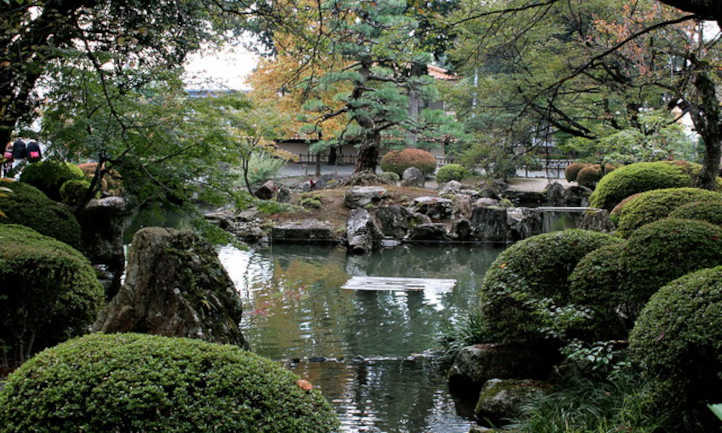
This image is property of www.epicgardening.com.
3. Zen Gardens
3.1. Origins of Zen Buddhism
Zen Buddhism, also known as Chan Buddhism, emerged in China during the Tang Dynasty and was later introduced to Japan in the 12th century. Zen Buddhism places great emphasis on meditation and the direct experience of enlightenment. Zen gardens, also known as dry gardens or karesansui, evolved as a reflection of the minimalist and contemplative nature of Zen practice.
3.2. Zen Garden Design Principles
Zen gardens are characterized by their simplicity and austerity. The design principles of Zen gardens revolve around minimalism, asymmetry, and naturalness. They often feature raked gravel or sand beds representing water, with carefully placed rocks symbolizing mountains or islands. The act of raking the gravel or sand is considered a form of meditation, helping to clear the mind and achieve a state of tranquility.
3.3. Features of Zen Gardens
Zen gardens are designed to evoke a sense of calm and serenity. They are intentionally devoid of colorful flowers and lush vegetation, relying instead on carefully placed rocks, moss, and pruned trees to create a harmonious composition. The use of negative space, such as empty areas of gravel or sand, encourages contemplation and mindfulness. Zen gardens serve as a sanctuary for reflection and a reminder of the impermanent nature of existence.
4. Tea Gardens
4.1. The Tea Ceremony and Garden Design
Tea gardens, also known as chaniwa, evolved alongside the Japanese tea ceremony, or chanoyu. The tea ceremony is a highly ritualized practice that emphasizes mindfulness, harmony, and respect. The design of tea gardens reflects these principles, creating a tranquil and intimate space for the tea ceremony.
4.2. Elements of Tea Gardens
Tea gardens typically feature a carefully designed path leading to the tea house, with stone lanterns guiding the way. Ponds, streams, and small bridges are often incorporated into the garden to create a sense of serenity and balance. The use of evergreen plants and moss symbolizes permanence and longevity. Tea gardens are meticulously maintained to create an atmosphere of harmony with nature.
4.3. Relationship between Tea and Zen Gardens
Tea gardens and Zen gardens share some common elements, such as simplicity and a focus on creating a serene atmosphere. Both styles place great importance on mindfulness and the appreciation of natural beauty. Tea gardens often include a small Zen garden or a stone basin for guests to purify themselves before entering the tea house. The combination of these elements creates a seamless transition between the tea ceremony and the surrounding garden.
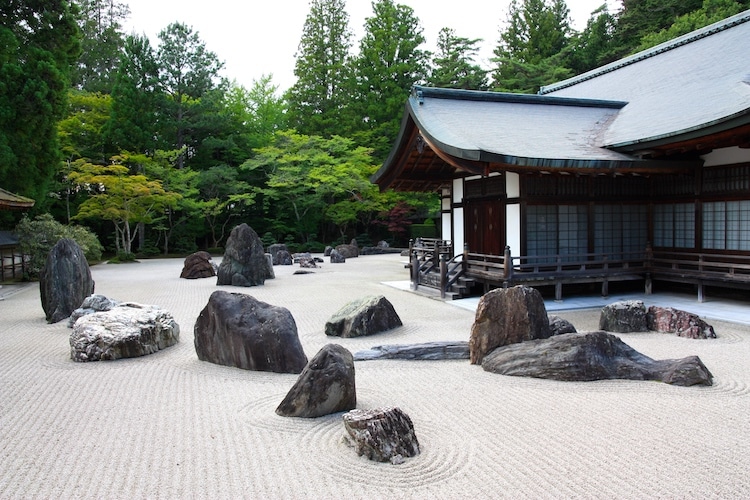
This image is property of mymodernmet.com.
5. Strolling Gardens
5.1. Development of Strolling Gardens
Strolling gardens, known as kaiyū-shiki-teien, emerged during the Edo Period (1603-1868) as a response to the growing interest in creating gardens that could be enjoyed while walking. Unlike the static and contemplative nature of Zen gardens, strolling gardens were designed to provide an immersive experience that changed as visitors moved through the space.
5.2. Design of Strolling Gardens
Strolling gardens are characterized by their winding paths, which lead visitors through a carefully orchestrated sequence of views and experiences. These gardens often include a variety of features such as ponds, waterfalls, hills, and vegetation to create a sense of exploration and discovery. Each view is carefully framed to capture the natural beauty of the surroundings.
5.3. Features of Strolling Gardens
Strolling gardens aim to create a sensory experience for visitors. They incorporate various elements, such as flowing water, fragrant flowers, and the sound of birdsong, to engage all the senses. Stone lanterns, small pavilions, and strategically placed rocks add visual interest and provide resting places along the journey. Strolling gardens are designed to be enjoyed at a leisurely pace, inviting visitors to immerse themselves in the beauty of nature.
6. Paradise Gardens
6.1. Concept of Paradise Gardens
Paradise gardens, also known as hōkyō-in, were inspired by the Buddhist concept of utopia or Pure Land. These gardens were created as reflections of the Pure Land, a place of perfect tranquility and bliss. Paradise gardens were meant to transport visitors to a realm of spiritual enlightenment and harmony.
6.2. Symbolism in Paradise Gardens
Paradise gardens are filled with symbolism that represents the Buddhist idea of the Pure Land. They often feature islands representing the mythical Mount Horai, home of the immortals, surrounded by ponds symbolizing the ocean of wisdom. Bridges, such as the famous Moon Bridge, connect the islands and allow visitors to symbolically cross over to the spiritual realm.
6.3. Elements of Paradise Gardens
Paradise gardens are known for their lush vegetation, vibrant flowers, and meticulously manicured trees. Streams, waterfalls, and ponds create a sense of tranquility and reflect the Buddhist belief in the transformative power of water. Paradise gardens are designed to evoke a sense of awe and wonder, transporting visitors to a realm of beauty and spiritual transcendence.
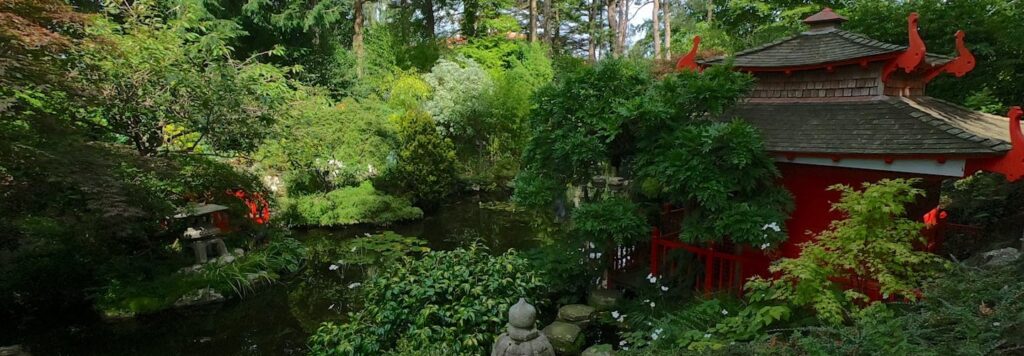
This image is property of www.welshslatewaterfeatures.co.uk.
7. Naturalistic Gardens
7.1. Return to Nature
During the Meiji Period (1868-1912), Japan went through a period of Westernization, which influenced the design of Japanese gardens. Naturalistic gardens, or shizen teien, emerged as a reaction against the rigid styles of the past, emphasizing a more organic and relaxed approach to garden design.
7.2. Incorporation of Natural Landscapes
Naturalistic gardens seek to create a seamless integration between the garden and the surrounding natural environment. They often make use of existing landforms, such as hills and valleys, and incorporate indigenous plants to create a sense of authenticity. These gardens are characterized by their more informal layout and aim to capture the beauty of the natural landscape.
7.3. Plant Selection in Naturalistic Gardens
In naturalistic gardens, plants are selected based on their ability to thrive in the local climate and ecosystem. Native trees, shrubs, and flowers are commonly used to create a sense of harmony with the surrounding environment. The goal is to create a garden that appears as though it has always been a part of the natural landscape, inviting visitors to connect with nature on a deeper level.
8. Shinto Gardens
8.1. Shintoism in Japan
Shintoism is an indigenous religion of Japan that emphasizes the worship of nature and ancestral spirits. It has had a profound influence on Japanese culture, including garden design. Shinto gardens, or jinja niwa, are created as sacred spaces that reflect the harmonious relationship between humans, gods, and nature.
8.2. Design Principles of Shinto Gardens
Shinto gardens are characterized by their simplicity and naturalness. They often feature a central pathway leading to the shrine, lined with stone lanterns and torii gates. Water, in the form of ponds or streams, is a prominent element, symbolizing purity and the divine connection. Shinto gardens aim to create a sense of peace and serenity, allowing visitors to commune with the spiritual world.
8.3. Features of Shinto Gardens
Shinto gardens typically include a variety of elements, such as sacred rocks, ancient trees, and sacred statues, to create a connection with the divine. Moss-covered stones and shrubs represent the sacredness of nature, while carefully placed stepping stones guide visitors through the garden. Shinto gardens are designed to elicit a sense of awe and reverence, inviting visitors to experience the spiritual energy of the surroundings.
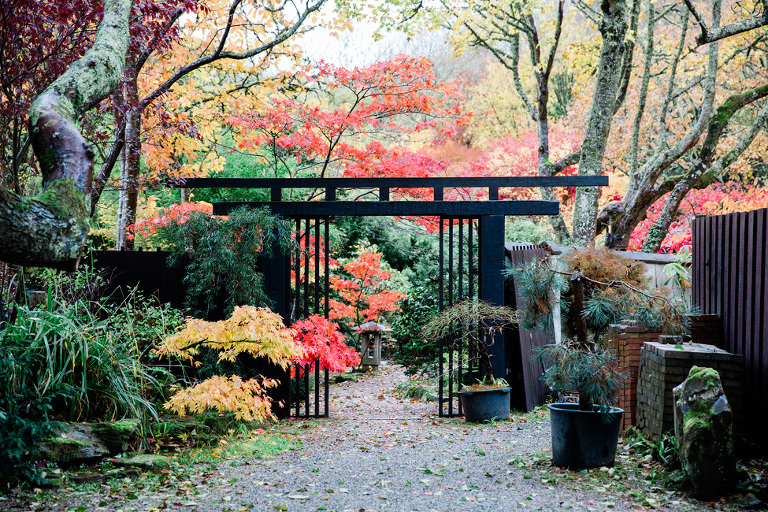
This image is property of www.japanesegarden.co.uk.
9. Modern Japanese Gardens
9.1. Influence of Western Gardens
In the late 19th and early 20th centuries, Japanese gardens underwent a period of transformation due to the influence of Western garden design. As Japan opened up to the world, garden designers began incorporating elements from Western gardens, such as flowering plants, formal layouts, and structured hedges.
9.2. Minimalistic Design
The modern Japanese garden movement, which emerged in the mid-20th century, embraced a minimalist approach to garden design. These gardens, often referred to as contemporary Japanese gardens, focus on simplicity, spatial arrangement, and the use of negative space. They draw inspiration from Zen and naturalistic garden styles, combining traditional elements with a modern aesthetic.
9.3. Contemporary Features
Contemporary Japanese gardens embrace a wide range of design elements, materials, and techniques. Water features, such as reflecting pools and cascading fountains, are popular additions, adding a sense of tranquility and movement. Sculptures, modern art installations, and architectural structures may also be incorporated to create a juxtaposition between traditional and contemporary elements. These gardens reflect the dynamic nature of modern Japanese society while paying homage to traditional design principles.
10. Conclusion
Japanese gardens are a testament to the profound connection between nature, culture, and spirituality. From the tranquil Zen gardens to the immersive strolling gardens, each style offers a unique experience and a glimpse into the rich history and traditions of Japan. Over the centuries, Japanese garden design has evolved and adapted, incorporating influences from various sources while staying true to its core principles. Whether you find solace in the simplicity of Zen gardens or marvel at the intricate symbolism of paradise gardens, the world of Japanese gardens is sure to captivate and inspire. So, next time you find yourself in the presence of a Japanese garden, take a moment to appreciate the artistry and the profound beauty it holds. Your journey through these enchanting landscapes will leave you with a deeper understanding of Japan’s cultural heritage and an enduring appreciation for the wonder of nature.

